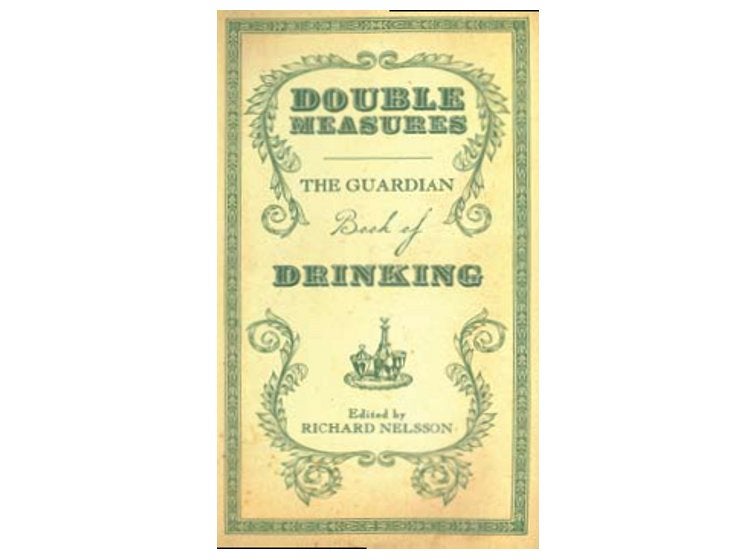
Richard Nelson (editor)
Double Measures: The Guardian Book of Drinking
Published by Guardian Books £12.99
Reviewed by Stuart George
This entertaining book collects drink articles from The Guardian (formerly The Manchester Guardian) from 1821 to the present day. Almost all of The Guardian’s distinguished (and perhaps not-so-distinguished) wine and beer correspondents are present, though there is nothing from incumbent wine correspondent Victoria Moore. (She is, however, referred to in a 2000 article by Francis Wheen on “Champagne Socialists,” in which Wheen quotes a letter to the New Statesman that describes its food critic Bee Wilson and its then wine correspondent Miss Moore as “intelligent, elegant writers on worthless themes”).
It is surprising to see a book about drink emerge from a paper that during the 19th century “was noted for its sober, nonconformist colour”. Certainly this principle had been abandoned by 1973, when AL Rogers wrote asking for advice on a “nonalcoholic wine suitable for a wedding luncheon.” The response? “The editor cannot oblige Mr Rogers”.
There is just one article from the long-serving wine correspondent Malcolm Gluck, and it is typically disingenuous: “All I can say about booze for certain is this: after the digestive system and urinary tract have done their business, there is very little difference between any of them”.
And this from a man who wrote a wine column for 15 years. When the more perspicacious correspondent John Arlott retired in 1980, at his leaving party he was reported to have commented, “I fear the worst,” after glancing down at a table covered in plastic glasses and cheap plonk.
The October 22, 1969, leader asks for a tougher breathalyzer test, and again in April 1976: “At present the police usually wait until a traffic offence has been committed or an accident occurred before requiring a motorist to submit to a breathalyzer test. This is a daft system. You don’t wait until the bomb has gone off if you see a suspected terrorist carrying a dangerous-looking parcel”.
Would today’s editor be able to get away with such phrases? But the story of a milkman being breathalyzed at 7:30am on Christmas Day because policemen had heard him singing while he was on his round surely belongs to 2008, not 1968.
A letter to the editor dated December 28, 1871, could also have been written in December 2008: “On Sunday night last, a little before 11 o’clock, I was passing along Oxford Road, and […] came up with a straggling sort of procession consisting of about five lads and about an equal number of girls. One boy appeared to be about 15 years old, and one girl about the same age; all the others would range from about 11 to 14. All of them were intoxicated”. There is more of the same in a letter dated August 27, 1873: “Here, then, is the history of little more than an hour’s observation of the effects of late drinking as seen among females on a Saturday night. I cannot say women, for in more than one case the chief actress was a mere girl. What sort of wives will those girls make? What sort of mothers will those girls make?”. In August 1955, “Concern was expressed in the House of Commons […] about the marked increase in convictions for drunkenness among young people under 18”.
There is a strong Guardian tradition of opinionated female contributors. A December 1967 entry by Mary Stott that begins, “Two types of men are hard to endure […] the ones who insist on looking up trains for you, and the ones who assume that because you are female you prefer a sweet white wine” is definitely a sign of changing times. It goes on to describe the founding of the “women’s wine club”. Elizabeth David’s wine-related mistakes in her book French Country Cooking were pointed out mercilessly by Lucie Marion on October 11, 1951.
Some of the predictions seem amusing now. “How long will it be before we offer our guests a full-bodied red Ngong?” asked the leader on December 13, 1963. Well, it still hasn’t happened in Nairobi, but doubtless the then editor would be surprised at the places that do now make decent wine, like Australia. In November 1957, DA Wilson’s Australian hostess told him, “We turn the label downwards and no one knows the difference.” He also noted that Australians drank 1.48 gallons (6.72 liters) of wine per head per year, compared to Britons’ 0.33 gallons (1.5 liters). (Both are now about equal at around 21 liters.)
Adam Nicholson’s article on “Mad Dogs and Drunken Englishmen” (August 11, 2005) gives a brilliant insight as to why the British drink in such an uncivilized manner: “The insistence on politeness actually creates the monster drunk […] Is there anything to be done? Perhaps not. The English have been famous in Europe as wild drinkers since the middle ages”. This book is really a work of sociology and shows how drinking habits and legislation can reflect a nation’s character. Nicholson’s article in particular shows that, in terms of the UK’s drinking culture, some things change and, sadly, some things remain the same.







